That since I’ve known of it Chiswick House has always served as an exemplar of classical architecture is hardly a unique opinion, but in this opinion I newly find myself in the company of the Adam brothers and the 5th Earl of Dumfries.
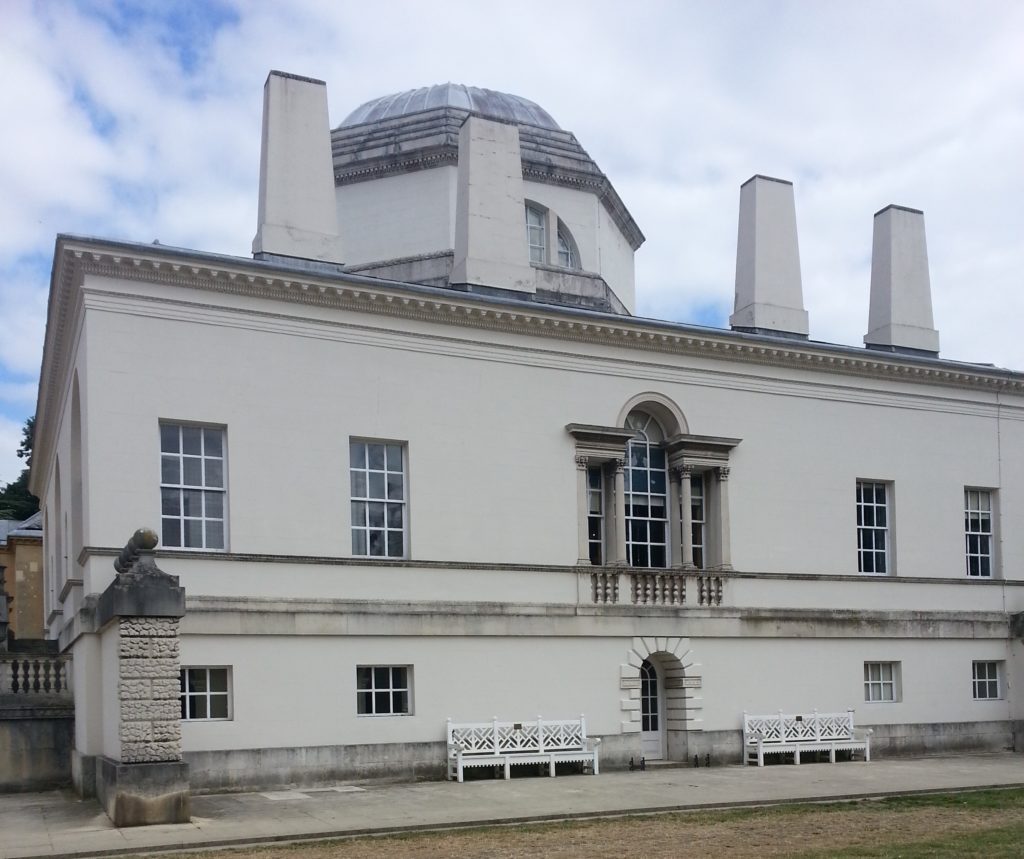
Chiswick House west front- Pantheonic dome surmounting ‘Diocletian’ and ‘Serliana’windows’.
It is always a treat to visit Chiswick House and I’ve lost count of the numbers of times it’s been over the years, as a visitor, as a student, and as a professor of art history. But this last time, in a happy synchronism, it was shortly thereafter followed by a visit to Dumfries House. We visited both Chiswick House and Dumfries House a couple of weeks ago and, while Dumfries is perhaps more well known for its link with the Adam family of architects, and noteworthy as perhaps the earliest work in which Robert Adam took a major hand, the visual language owes very much to the genius of the gentleman architect Lord Burlington, whose acolytes included most of his contemporaries, both aristos and architects.
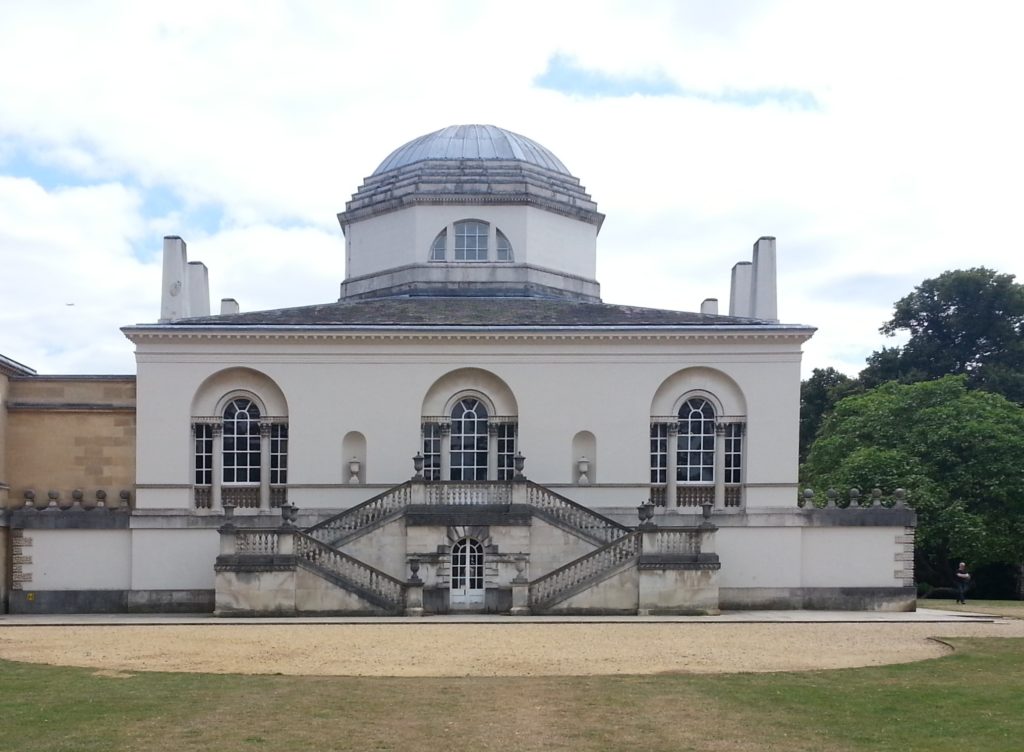
Chiswick House- north front
With the design of Chiswick House, Lord Burlington sought to construct and give homage not just to Andrea Palladio, whose work he had seen in situ in Venice and the Veneto, but also to antiquity, Palladio’s contemporaries, and his then greatest English adherent, Inigo Jones. Still, Burlington’s work does contain some idiosyncratic touches, including a marked fondness for the tripartite window design popularized in the work of Serlio, and while known variously as a ‘Palladian’ or ‘Venetian’ window, it is most often, in homage to Serlio, called a serliana. With its use on the west front of Chiswick House, a serliana marks the primary decorative element, while the north front uses three, placed within balustrades and relieving arches, to establish a symmetrical rhythm.
Although the serliana would have been unknown in antiquity, there exists a sufficient nod to the likes of Vitruvius in the Pantheon inspired dome above a window design taken from the Baths of Diocletian, and known as either a Diocletian or ‘thermal’ window. The chimney stacks were formed in the manner of obelisks, a Roman trophy taken from an Egypt conquered in antiquity, and re-erected by Sixtus V to mark significant locations and viewpoints in the midst of the thoroughfares of late Renaissance Rome. Clearly, study enhanced with not one but two Grand Tours was not wasted on Lord Burlington.
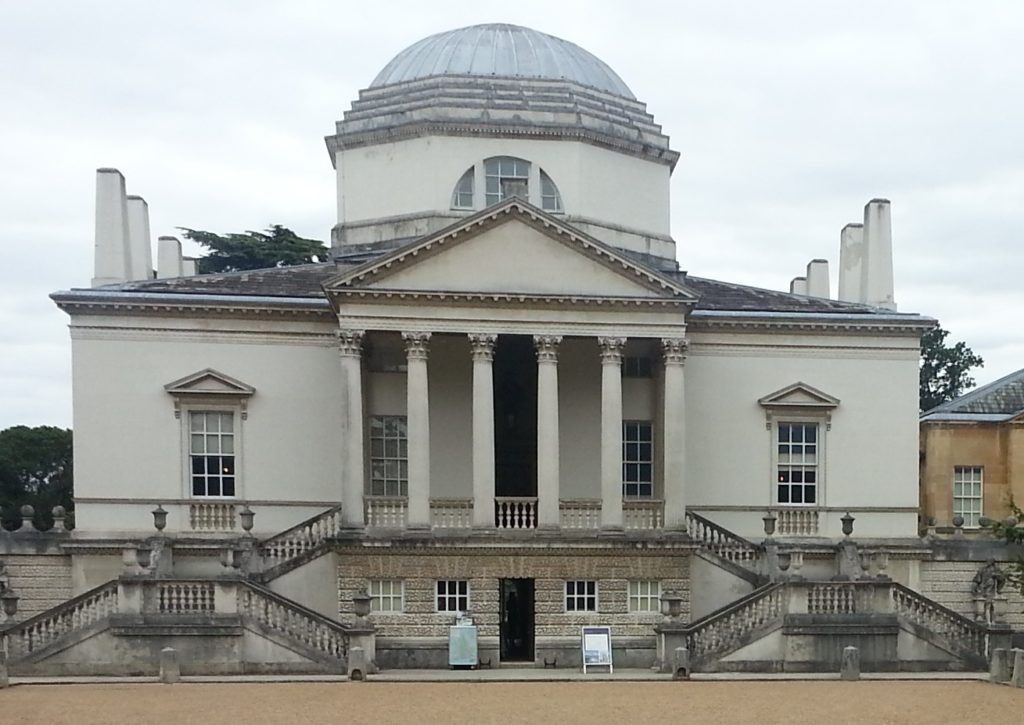
Corinthian columns in the Chiswick House portico.
While Chiswick House is most commonly assumed to derive from Palladio’s Villa Rotunda, itself derived from the Pantheon, it is hardly a literal quotation and has always seemed to me that, with the greater abundance of ornamentation, Burlington sought to provide more explicit visual references to classical antiquity than did his Venetian predecessor. The columns of the portico are of the Corinthian order, and copied from the Temple of Jupiter Stator in Rome. While a lot has been written over at least the last two millennia about the anthropomorphised personalities and uses of the different orders appropriate to those personalities, it is hard to doubt that Burlington knew everything written up to that time, and used the Corinthian order deliberately. While it has been said that visually the Corinthian was assumed to communicate an air of refinement Serlio had also written it was the appropriate order for churches, particularly those dedicated to the Virgin Mary. It is known that Burlington was a recusant Jacobite, devoted, in his private moments, to the Stuart cause. Perhaps it is not too fanciful to think his use of the Corinthian order is some subtle albeit coded nod to the Stuarts and the Church of Rome.
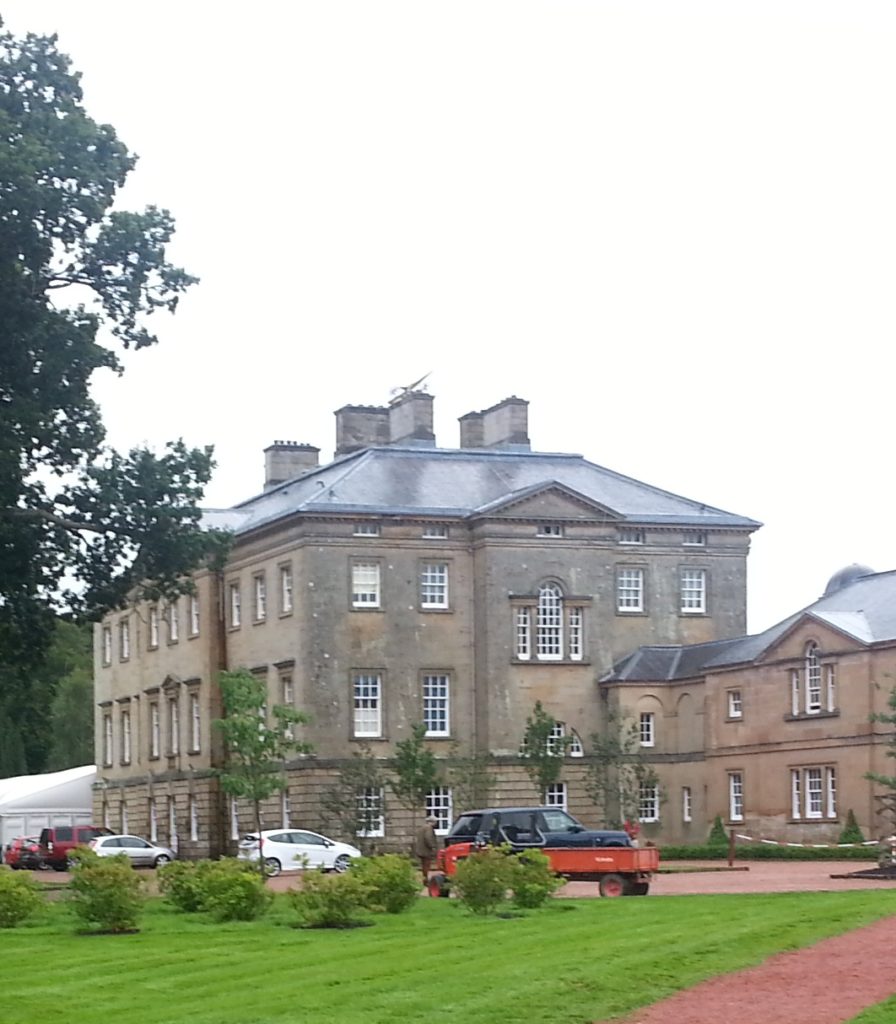
Dumfries House, east front, with serliana and thermal window.
Where Lord Burlington handled classical and Renaissance elements to elegant and sophisticated effect, the translation to the seat of a Scottish nobleman was not quite so successful. Simon Green, in his guidebook to Dumfries House, cites correspondence between Lord Dumfries and another Scottish lord, the Earl of Hopetoun, wherein Hopetoun mentions how the Adam brothers had shown some of the drawings for the proposed house to Lord Burlington who, it seems, gave his approval. No question, in the second quarter of the 18th century, Burlington was one of the premier arbiters of taste and refinement amongst the aristocracy, and Chiswick House naturally functioned as a real manifestation of that taste and refinement.
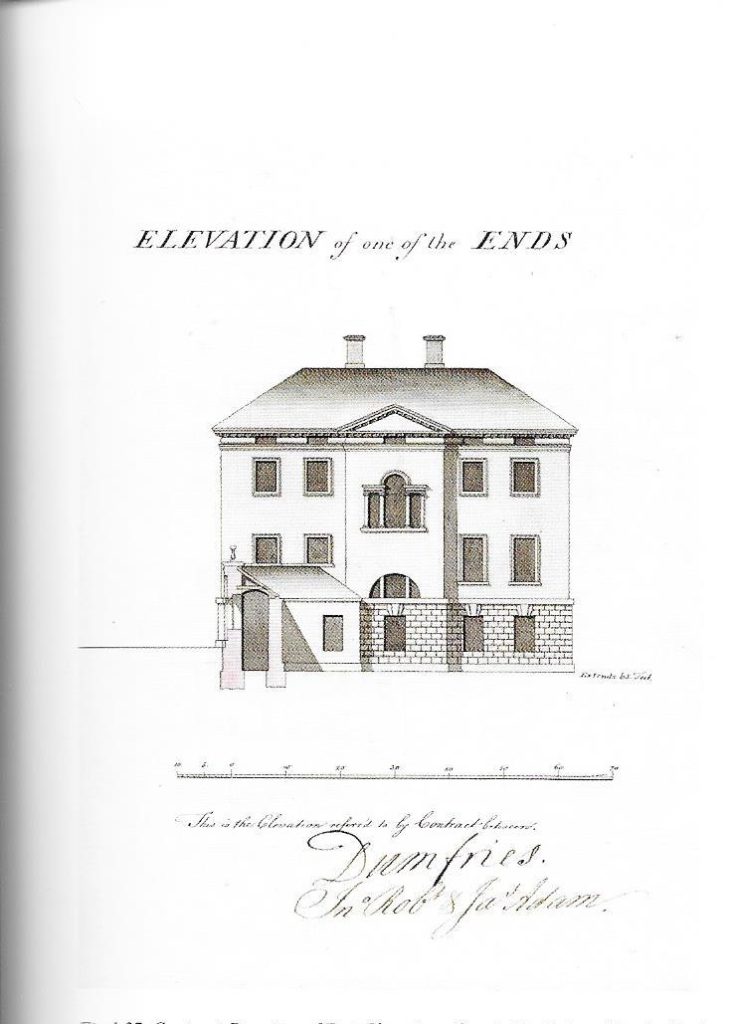
Elevation of the Ends of Dumfries House, signed by the Adam Brothers and Lord Dumfries.
However, in the inexperienced hands of the Adam brothers, the result is substantially less refined. In a view of the east end of Dumfries House, one sees a serliana used to light the main staircase, and a thermal window placed beneath it to light a passage for the floor below. While the elements are recognizable, their placement and effect are visually dissonant. The arch of the thermal seems flat and heavy with its too close placement below the serliana and directly above the rustication of the ground floor creating thereby a discordant effect. Moreover, the use of both these elements, placed in a central, projecting bay, emphasizes this clumsiness made even clumsier by a lack of a symmetrical and stylistic relationship between the windows of the two bays on either side. The more careful and appropriate scale, placement and rhythm Burlington achieved with a serliana and a thermal was a subtlety that was perhaps beyond the ken of John, Robert and James Adam. Lord Dumfries was no more enlightened, and was doubtless of the belief that use of classical elements, no matter how ineptly wrought, would nevertheless signal his sophistication in matters of design. In this, architect and patron were alike, witness that all of them signed off on the elevation which drawing in itself is of discordant effect. Could something of this sort, as correspondence between Dumfries and Hopetoun implies, been shown to and received the approbation of Lord Burlington? Surprising if it were.
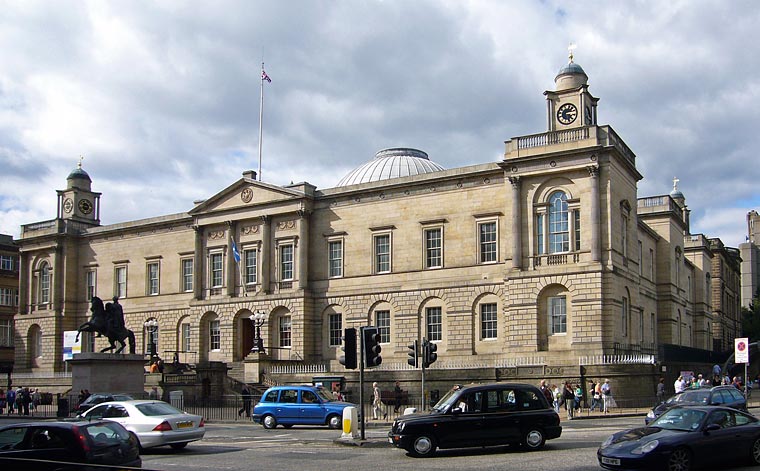
Register House, the serliana well placed.
With all that, Dumfries House and the work of the Adam brothers are significant in that they mark what was the first Scottish residence to display these elements, and also in that it is yet more proof, if any were needed, of the overarching influence of Lord Burlington in matters of design that pervaded Great Britain, even if that influence may not have been shall we say favorably executed. Something to note, perhaps gratuitously, the Adam brothers, and most notably Robert Adam, ultimately became the deserved torch bearers for classicism, with Robert Adam the virtual inventor of a neo-classicism espoused visually to extraordinary effect. Performing something of the role as apologist for Robert Adam, Simon Green does acknowledge the facility and effect with which the mature Adam employed the serliana, citing the Register House in Edinburgh.
For reference, the following are both accessible and worthwhile:
Simon Green, Dumfries House, 2014- the official guide to Dumfries House, with excellent, new scholarship derived from archival sources
Chiswick House, English Heritage. The edition written by Richard Hewlings or the edition updated by Roger White, are complete and succinct. Both Hewlings and White are redoubtable architectural historians closely connected to The Georgian Group, the licensed consultancy in England on the built environment between 1714 and 1837.
